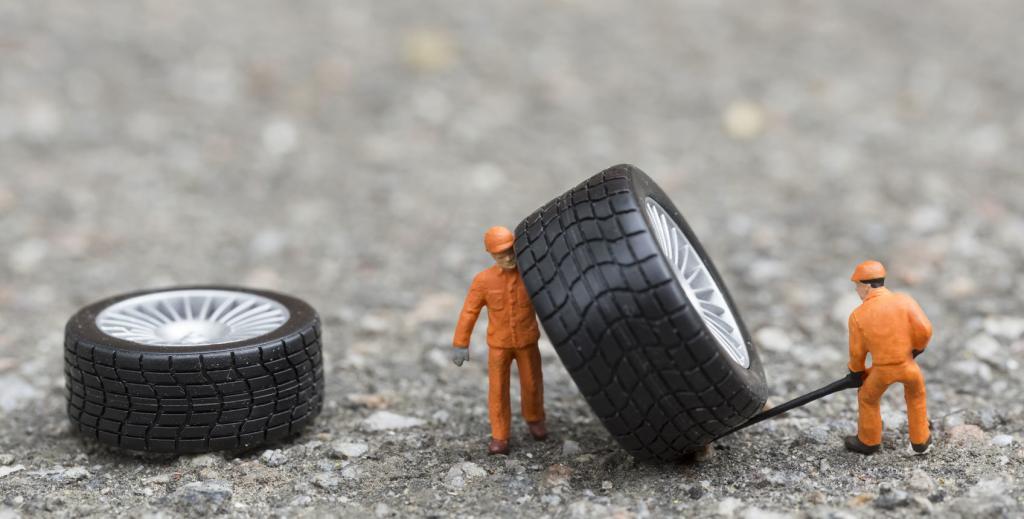Making your tyres last longer isn’t just a smart way to save money, it can also have a major impact on your safety when you are out on the road. That’s because making your tyres last longer involves keeping them in a good condition, which in turn will improve your car’s responsiveness in a variety of potentially hazardous conditions and situations.
Here are some guidelines for getting more life out of your tyres.
Get fairer car insurance. Based on how you drive
Know when to replace them
Before you even think about getting more life out of your tyres you need to know when they’ve reached the end of the road. The first thing to check is that each tyre has sufficient tread depth for safe driving. Many tyres have tread wear bars in the tread grooves. If these are flush with the surrounding tread, the tyre requires replacement. If the tyre does not have tread wear bars, take a 20 cent coin and insert it into a groove. If the tyre tread doesn’t reach up to the bill of the platypus on the coin, you need a new tyre. Don’t forget your spare – these should be replaced every 6 years.
Maintain the correct tyre pressure
This is straightforward – check your tyre pressure and adjust it whenever you refuel your car. The majority of petrol stations have air pumps that will also gauge your tyre pressure. If you have a DIY approach to car maintenance you can purchase an inexpensive handheld tyre pressure gauge and check your tyre pressure at home. The correct pressure for your tyres will be printed on the panel of the driver’s door of your car as well as in your car owner’s manual.
Tyres that are over- or under-inflated can cause a range of problems ranging from lower fuel efficiency to hazardous blowouts.
Rotate your tyres
The tread on a tyre will wear differently depending on where it is located on the car. Keeping a tyre in the same position throughout its lifespan will therefore lead to faster tread wear than if it was rotated to another position on your car. Rotating tyres not only makes your tyres tread last longer, it also wears the tread evenly across your tyres, leading to a smoother ride. Tyres should be rotated every 10,000 km.
Keep your wheels balanced
If you feel your car ‘pulling’ in a specific direction and have to counter this effect with your steering wheel, then your car’s wheel alignment is out of whack. Many tyre repair shops can balance your tyres and fix any wheel alignment issues while you have them rotated. So it’s a good idea to have both issues seen to at the same time to cover all bases. Besides prolonging the life of the tyres, you’ll also be rewarded with fewer vibrations and less cabin noise when you drive.
Don’t ignore punctures
When you notice that one of your tyres requires inflation more often than the others, check it for a puncture. Larger punctures will generally force you to deal with them if you want to remain mobile, but smaller ones can be missed or ignored with potentially serious consequences. Punctures smaller than 6mm in diameter can be easily and inexpensively fixed using a mushroom plug, while larger ones will require you to replace the tyre. Never drive on a punctured tyre.
Replace it with the spare and have the punctured tyre repaired or replaced as soon as possible.
Practise tyre-friendly driving
The way you drive can affect how quickly your tyres wear out. Speeding around corners is one way to wear out your front tyres more rapidly, so take it easy in the bends. Tyres in cars without ABS braking systems can lock during hard braking, eating away at your tread. You should also stick to speed limits and avoid speeding. Driving at high speed can generate heat build-up, which can lead to a blowout. It also gives you less time to react to tyre-damaging road hazards like potholes.
Replace your tyres after 7 years
If you take good care of your tyres or don’t drive your car often your tyres may reach the ripe old age of 7 without the tread falling beneath acceptable levels. However, over the years the tyres will still have been exposed to heat, UV light and moisture that will have degraded the rubber. In fact tyres that aren’t used often are more susceptible to structural degradation, which is why your spare tyre needs to be replaced every 6 years. You can find out how old your tyre is by checking the DOT Tire Identification Number printed on the tyre. The last four digits indicate the week and year that the tyre was manufactured.
Get rewarded for safe driving
Download the free UbiCar smartphone app now and you can begin scoring every trip you take and getting detailed feedback on how well you drive.
Your safe driving will make you eligible for fairer priced car insurance and other rewards.


